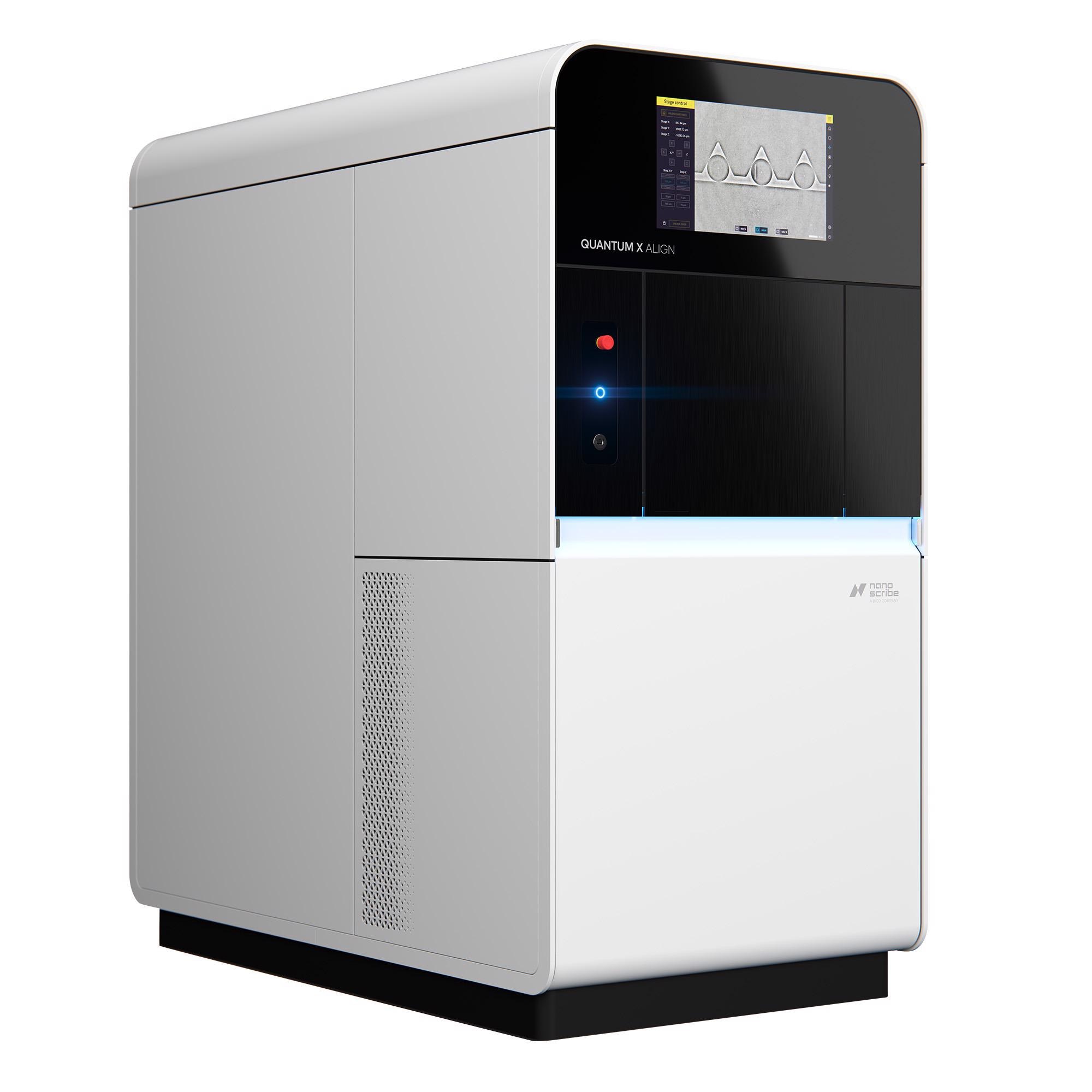Nanoscribe, a BICO company, will debut the Quantum X align, a new high-performance 3D printer at the Photonics West Conference and Exhibition in San Francisco. The Quantum X align is the first 3D printer with advanced 3D alignment capabilities that enables the printing of freeform microoptical elements directly onto optical fibers and photonic chips, setting new standards in the design and fabrication of microoptical elements.

© Nanoscribe
The Quantum X align provides robust and reliable alignment solutions for realizing efficient light couplers via Free Space Microoptical Coupling (FSMOC) between chips and optical fibers. The novel device opens up new horizons for imaging technologies using fiber and beam shaping applications, especially for hybrid packaging of photonic chips. The microfabrication system extends the capabilities of the groundbreaking Quantum X platform, allowing for a more straightforward process chain, relaxed assembly tolerances and no necessity of the costly and time-consuming active alignment and a further reduction of devices dimensions.
With the addition of the new Quantum X align to our industry-proven Quantum X platform, we are enriching Two-Photon Polymerization with powerful alignment technologies that drive the ever-increasing demand in data communications, telecommunications and sensing applications.”
Martin Hermatschweiler, CEO and co-founder of Nanoscribe
"Our goal is to address the challenges of efficient coupling in photonic packaging and make high-precision 3D printing the technology of choice in integrated photonics,” added Hermatschweiler
Advanced Photonic Packaging Solutions for Enabling Tomorrow’s Technologies
The new high-precision 3D printer unlocks unprecedented possibilities for photonic packaging, which is promising for developing more energy-efficient technologies with high data processing capacities. Photonic integrated circuits (PIC) will help to surpass the limited computing power of today’s microelectronics at a tremendously lower power consumption, driving applications in artificial intelligence or quantum computing.
However, manufacturing of such devices requires new technologies for realizing microoptical interconnects. The new Quantum X align addresses these current challenges with innovative hardware and software solutions. Based on Two-Photon Polymerization (2PP) as the leading high-precision 3D printing technology, the Quantum X align achieves alignment accuracies in all spatial dimensions of down to 100 nanometers.
Finalist for the Prism Awards 2022
The Quantum X align is a finalist for the Prism Awards 2022 in the category Manufacturing and Test, proving the innovative approach of this revolutionary printer. The goal of this international competition is to honor the best new products in the optics and photonics market. The awards ceremony will take place on January 26 in San Francisco as part of the SPIE Photonics West Conference and Exhibition.
The Quantum X align is the first 3D printer with advanced 3D alignment capabilities within Nanoscribe’s disruptive Quantum X microfabrication platform. It is equipped with high-precision imaging modules to 3D map substrate topographies and to automatically align the structures to be printed in all spatial directions.
This sets new standards in the design and fabrication of microoptical elements, which are automatically aligned to fiber tips, photonic chip edge couplers (EC), grating couplers (GC) and laser diode facets during the 3D printing process. Photonic packaging is streamlined and empowered with:
- Mode field adaptation at the component level instead of the chip level
- An easy transfer of fiber arrays to Lensed Fiber Arrays (LFA) by printing the collimating or focusing optics on the tip of each fiber
Nano-Precision Alignment for On-Fiber and On-Chip Printing
Quantum X align allows for automatic 3D fiber core detection and automatic tilt compensation to precisely print on fibers or fiber arrays. The Quantum X align printer’s central feature for printing on photonic chips is a confocal imaging module for 3D mapping of substrate topographies combined with a fully automated alignment to predefined markers or waveguides.
Thus, Quantum X align makes it easy to 3D print freeform microoptics perfectly aligned onto the fiber core or attached to facets or waveguides on standard or customized optical chips. All in all, auto-aligned 3D printing significantly reduces complex chip-level mode field tuning, eliminates active alignment and enables novel and unprecedent use of freeform microoptics at optical interfaces.